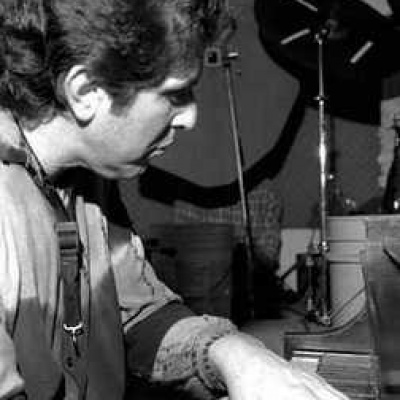
Joel Futterman
by Steve HueyPianist Joel Futterman is one of the few modern free improvisers who has been able to not only master the percussive density of Cecil Taylor, but inject his own flavor into the frantic yet intellectual style Taylor pioneered. During the latter half of the 90s, Futterman also added the curved soprano saxophone and Indian flute to his instrumental repertoire, becoming an impressive player on both. Yet his most obvious and highly developed virtuosity remains on the piano, the product of a rigorous daily practice schedule Futterman has maintained since the mid-70s. Although Futtermans earliest roots lay in Chicagos AACM community, he remained largely secluded until the early 80s, and most of his music didnt become available until the 90s; when it did, however, Futterman finally began to receive his due.Joel Futterman was born in Chicago on April 30, 1946, and was performing in jazz clubs with professional musicians by age 14; he also played behind Rahsaan Roland Kirk at a local jazz festival. Futterman made contacts in the growing AACM community, but also began practicing alone in his apartment more and more obsessively. Feeling he had exhausted the Chicago scene, he and his wife moved to Virginia Beach, VA, in 1973, where Futterman could continue working out his own personal style in relative isolation from outside influence. In the early 80s, Futterman released three LPs on his own JDF label, and his trio performed frequently with saxophonist Jimmy Lyons, a longtime member of the Cecil Taylor Unit. Some of their performances were issued in the early 90s by Ear-Rational, Bellaphon, and Konnex. Sadly, Lyons succumbed to cancer in 1986 and a grief-stricken Futterman retired from live concert work.A fan and sometime musician named Philip Egert convinced Futterman to return to public performance, and helped him find labels to release past and future recorded work. As Lyons archival releases began to appear, Futterman entered the studio with trumpeter Raphe Malik in 1990; two albums from those sessions, Berlin Images (Silkheart) and To the Edge (Konnex), appeared in 1992. Naked Colours, issued in 1994 on Silkheart, featured multi-instrumentalist Hal Russell, and in 1995 Futterman issued his first all-solo album, Silhouettes. Futterman next formed a group with tenor saxophonist Kidd Jordan, which proved to be one of his most fruitful associations. Their first album together was Nickelsdorf Konfrontation, recorded live in Austria and issued by Silkheart in 1996. New Orleans Rising followed in 1997 on Konnex, and Southern Extreme appeared in 1998 on Drimala, finding Futterman and Jordan teaming with AACM charter member Alvin Fielder on drums. After another solo outing (Who Are You, also on Drimala), Futterman recorded a trio of well-received albums for the Kali label in 1999: Revelation was a duo with Jordan, Relativity a duo with guitarist Jimmy Williams, and Authenticity a trio adding bassist William Parker to the latter partnership. In 2000, Futterman teamed with Paul Murphy on another album for Kali, simply titled Paul Murphy-Joel Futterman Quartet.
